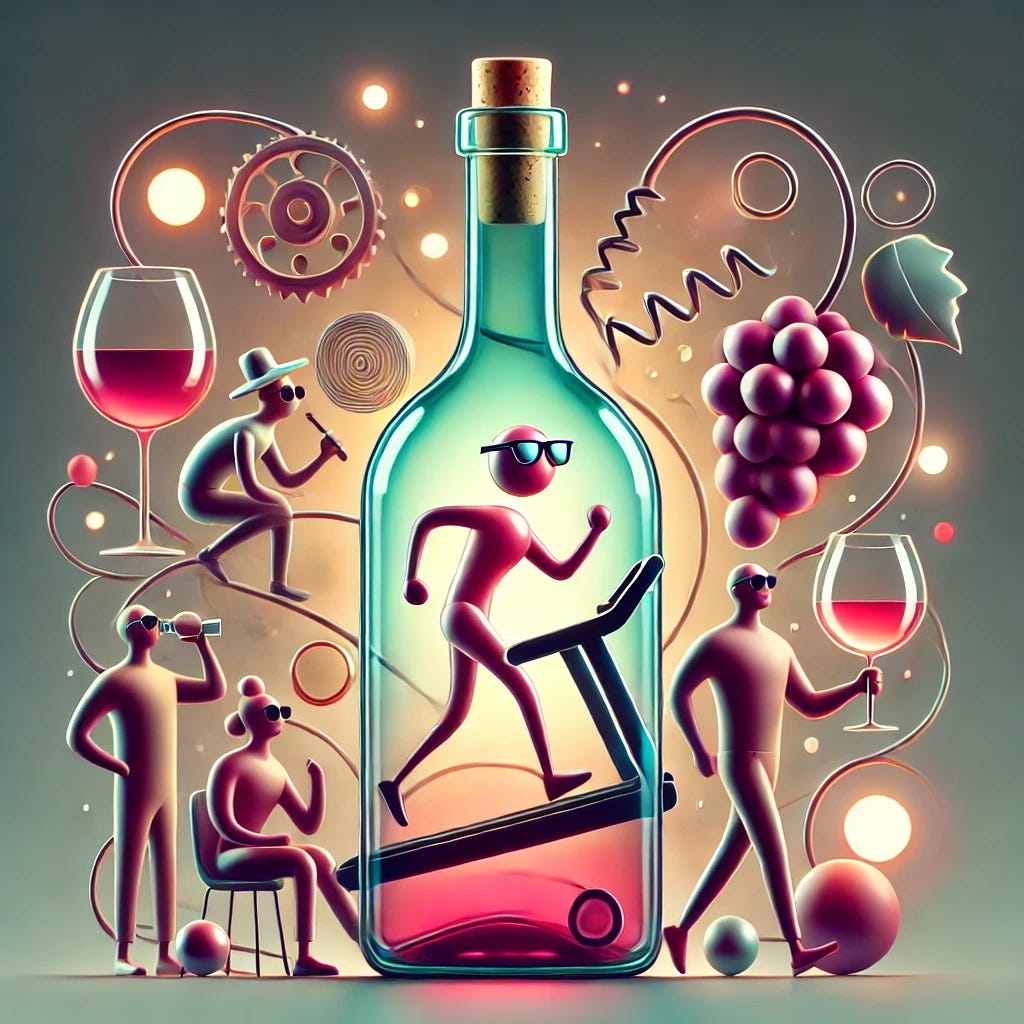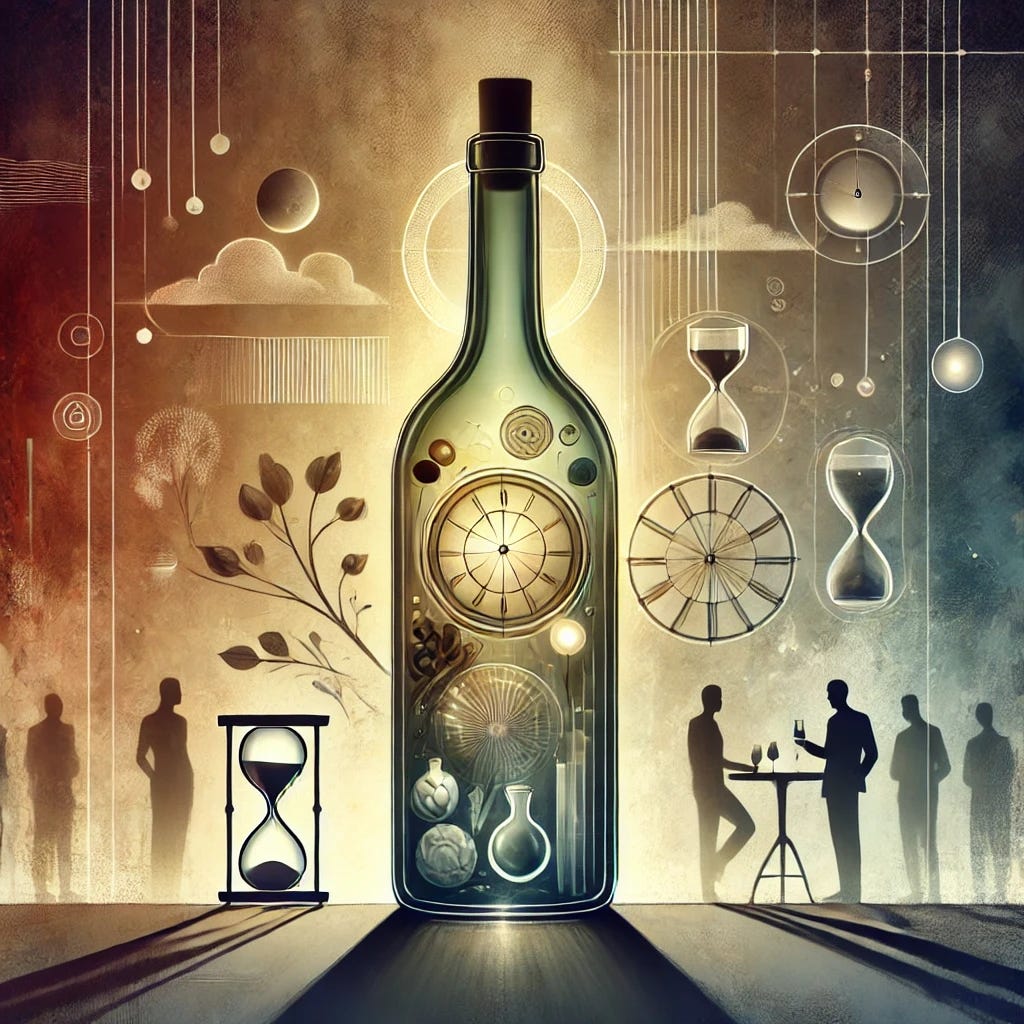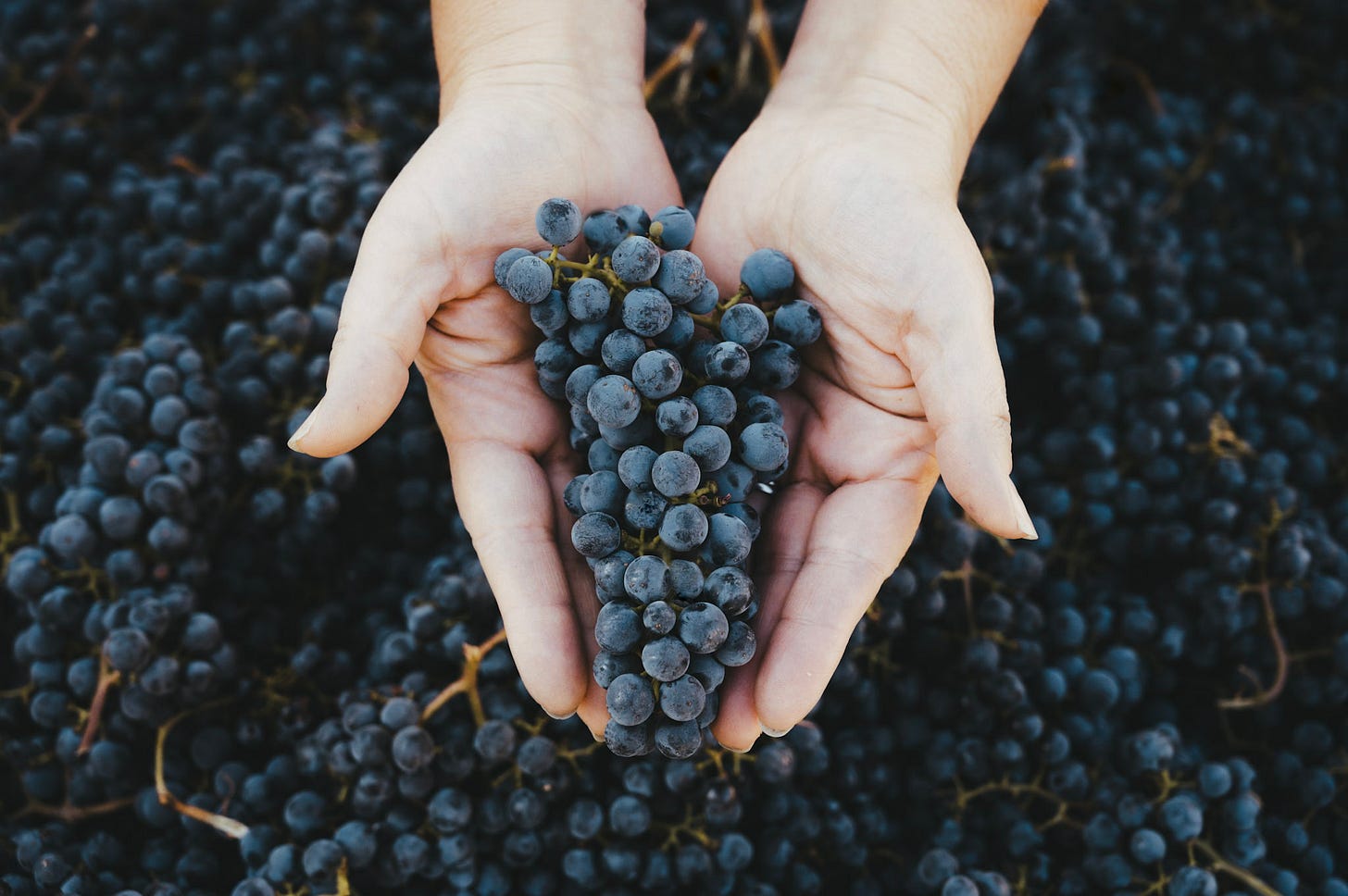NAPA VALLEY, Calif. — I am frequently asked to identify the best single bottle of wine I ever drank. Those asking this are, I’m sure, well-meaning and may have no ulterior motives. Since I have heard this query often, I have a few standard answers that I realize are completely unsatisfactory and for reasons that cannot be explained simply. Those with patience will find what follows to be a more complete explanation.
The difficulty in answering this question starts with the fact that it entails more than 50 years of conscious wine consumption. And I find greatness in many different places and for many different reasons.
Also, although I have a good memory, I have learned from friends who were with me at various moments that I also have misremembered many outstanding — if not exceptional bottles — that easily could be candidates for the top spot. I welcome their additions to my list.
One key here is what a good friend likes to say: “There are no great wines, only great bottles of wine.” And to experience one is to thank good fortune that I was there to experience it and to rank it in the pantheon of exceptional-ness for which every wine-lover prays and every wine producer hopes to create. Moments like this do not come along often. And the more wines I rate as great, the more my water is muddied.
Context is the very soul of great wines – an element that most of us ignore. It is the elephant in the chambre, the linchpin of enjoying greatness that no one ever talks about.
Just because I happen to adore a particular bottle of a lovely 2020 Chablis, as I did last Saturday night with friends, is no reason to add it to the list. It was excellent; its brilliance was validated by my friends’ approbation. Since both know what a great wine ought to be and since they loved it, I was encouraged to return to where I bought it and buy a few more.
Did it rank with the greatest chardonnays I ever tasted? Not even close. Yeah, it was fine and was a lovely representation of its district. But I have had dozens of other Chablis and quality chardonnays that exceeded this one. However, the specific memories that prompted my recollections of great chardonnays of the past have, unfortunately, been opaqued by time. I remember recent experiences more specifically more distant ones less so.
What does remain in the case of almost all wines that I would consider to be great is Context.
And I did not make a mistake when I capitalized that word. In fact, Context is the very soul of great wines — an element that most of us ignore. It is the elephant in the chambre. It is the linchpin, the aspect of enjoying greatness that no one ever talks about. And it is entirely embedded in my old friend’s comment that there are no great wines, only great bottles.
This takes a bit of explanation. A great wine starts with great grapes, and that’s an entirely separate story — one best explained by reading an authoritative wine book such as Hugh Johnson’s 53-year-old masterwork, “The World Atlas of Wine.” The eighth edition’s co-author Jancis Robinson succinctly writes, “Wine is geography in a bottle.” That brilliant line speaks volumes.
This phenomenal literary work, since copied reasonably well by others but never surpassed, remains the standard by which all wine-lovers should see how region is inextricably intertwined in all wines that hold any pretension of greatness. Without regional identity, all wines simply lack that extra dimension — the wherewithal to display the elements that add infinitely to a wine’s raison d’être.
It need not be said, but a blended red wine made from grapes that are not identified by grape variety that were grown in a region that is not identified and is from a vintage that is not identified can taste very good, to be sure. But ascribing greatness to it is, in a true wine-lovers’ viewpoint, simply irrational. I’m certain there are people who would disagree, but for me and most of the people I consider to be true wine-lovers, the sense of place matters. Big time. Secondary is the distinctiveness of grape varieties. And vintage sometimes comes in to play, as well.
Bear with me; we are getting to the point. A great wine, then, conforms to a stylistic model. I contend that a red wine cannot be considered great if its label says it is a cabernet sauvignon from Napa if that same wine does not smell and taste like cabernet and if it does not reflect any Napa-ness. Plenty of people would tell you that a very dark, oaky, soft, approachable, tasty (to them) red wine is “great,” even if its label says it is a cabernet from Napa but the wine has neither cabernet-ness nor Napa-ness.
Curiously, in some cases their assessment leads (unaccountably to me) to the rewarding of 100 points.
If you assign bonus points to a wine for authenticity, a wine like the one described just above gets no bonus points. To be sure, lots of people may like it. But in my book it hardly qualifies as a great wine. Without its “where-ness” and varietal character, it is just wet. We should assess such things as objectively as possible but within a subjective framework, which of course can lead to some serious argumentation among wine-lovers. But civil debates can be fun.
This, then, is one of the key aspects of appreciating great wines. It has as much to do with authenticity as with any other factor. In last week’s essay here, I spoke of three historic tastings conducted in the Napa Valley recently in which every cabernet served was a classic example of what each was supposed to be. Every wine was exceptional in one way or another. And what made them so interesting were the differences between them. They were heterogeneous. They were not homogeneous.
Another thing: All the wines were balanced. I do not believe any wine can be considered great if it is not balanced.
And in my recent tastings, one of the fascinations was that we all so appreciated all the differences that we observed. The 1979 “this” from Mount Veeder differed from the 1980 “that” from Rutherford — and vive la différence. That’s why we buy different wines. Because they differ.
A story relates to this. I’m good friends with Charles Mara, who, at the first Napa Valley wine auction in 1981, purchased the first case of Opus One for $24,000. Charles lives in Southern California and is now retired. He has probably tasted more great wines than I have.
I asked him one day years ago, “What was the worst supposedly great wine you ever tasted?” Charles said it was a bottle of Domaine de la Romanée-Conti from a great vintage. I was shocked. I have never had a bad bottle from this producer. Every bottle has been completely exemplary.
“Seriously?” I asked.
“Yeah,” he replied, “The wine was perfect, but I had it with some people that I absolutely hated!”
And that reminded me of one of the finest wines I ever tasted that I hated. It was a bottle of 1974 Heitz Martha’s Vineyard Cabernet, and it relates to Context.
Two guys with a huge advertising budget were visiting Los Angeles on a promotional trip. They said they were real wine-lovers. They invited me and a good friend to a fancy restaurant in Pasadena. We ordered the ’74 Heitz Cabernet — after our two out-of-town hosts had downed several scotch and sodas.
The wine arrived, and almost immediately both men lit up cigarettes, which remained lit at the table while the wine was poured. My friend and I were appalled. All we could smell was smoke. The two advertising executives (wine-lovers?!) just laughed and puffed. It was the only time I really hated that wine, and it was all about Context.
Context can take many forms. A special art and antique exhibit about 1998 at the Carrousel du Louvre in Paris served as a revelation. In addition to displaying some incredible art, it gave me an idea of why fine wine is so inextricably linked to its Context.
The Louvre was displaying a Monet and several Picassos that were for sale. Such treasures usually go through auction houses. What made the show dramatic was how the paintings were displayed, each with picture-perfect lighting. Each painting was hung on a wall with special track lighting positioned precisely to highlight exactly what was inside the frame. The frames were excluded from the lighting.
The result: Even a particularly mundane Monet stood out as nearly three-dimensional with no glare, no shadows, no dull spots. It was spectacular — until the sale was concluded and we watched as someone removed it from the wall. Without the special lighting, the painting looked awfully ordinary. The same for many other artists’ works that we had never before seen look so brilliant.
The following day, by contrast, even the newly redesigned Musée d’Orsay, one of the finest art museums in the world, had most paintings lighted purely by happenstance. In some cases, ambient lighting made them seem lifeless and drab.
In many ways, wine is like this. Take an excellent wine and use the wrong glassware (a tiny bowl for a mature Barolo, for instance) and it simply cannot show its true glory. Or serve a Montrachet ice cold or a cabernet at 75 degrees Fahrenheit. Or a main dish too sweet for a Chianti or a steak with a Sancerre. Or, as with Charles Mara’s tale, with dinner companions who are incompatible or ambient smells, like a dowager who bathed in perfume.
Similarly, even simple wines can be elevated into tasting much better by improving all the surrounding elements. It’s why some winery tasting rooms now use crystal stemware from Riedel. Fine stemware makes even simple wine taste just a bit better.
Improving the Context doesn’t, of course, actually improve wine. Even the best of circumstances cannot hide truly significant flaws or ordinary-ness. Years ago, in an upscale Beverly Hills café where we were seated two tables away from Sean Connery, the waiter poured me a splash of the wine I had ordered. It was abominable, ruined by a common spoilage element so foul I was shocked.
I declined the wine. The youngish waiter didn’t know what to do. He may have believed that most diners in such classy surroundings would buy into the gloss effect such places display. He finally summoned the manager, who also exhibited disbelief. I might have been stuck with this dud had I not produced a business card, alerting them that I wasn’t some rube just off an eggplant truck. The men removed the offending liquid.
As to my original question about the best wine I had ever tasted, there have been many challengers and, in most cases, the Context was particularly astonishing. But the quality of the liquid came first. I decline to be seduced by milieu. (One of the worst wines I ever tasted, even though it was not spoiled, was a horrid chardonnay served at a glorious dinner at the Hearst Castle.)
Candidates: In 1986 in San Diego, a good friend celebrated a special occasion by opening a bottle of 1981 Château Lafite-Rothschild, and alongside it was a bottle of the same Bordeaux producer’s 1881 vintage. In 1990, on a visit to Italy, the acclaimed Piedmontese winemaker Elvio Cogno poured his remarkable 1964 Barolo at a famed local restaurant. In 1985, Didier Mommessin opened his 1969 Mommessin Clos de Tart at a Los Angeles dinner. Francis Ford Coppola celebrated one evening with a half-bottle of a 1933 Inglenook Cabernet that was produced even before Prohibition ended.
Probably the greatest white wine I ever tasted was Domaine de la Romanée-Conti le Montrachet. It is such a remarkable and unique experience that even at the domaine it is served after the red wines.
Others: At least a half-dozen Hermitage reds from the Rhône Valley, a dozen whites and reds from Australia, including phenomenal reds from Wendouree, Penfolds Grange and Giaconda, plus a 1945 “Burgundy” from winemaker Maurice O’Shea and a dozen New Zealand wines.
More: 1958 Martin Ray Pinot Noir, 1969 Beaulieu Vineyard Private Reserve Cabernet Sauvignon, 1967 Château Haut-Brion Blanc, 1985 Marchesi Antinori Solaia; several phenomenal table wines from Germany, Spain, Canada’s Okanagan Valley and Ontario (including ice wines); more than a dozen New York state rieslings, untold numbers of vintage Ports from Portugal, French Champagnes, and dozens of great wines from Oregon, Washington, Michigan (!), Virginia, Ohio and even Minnesota.
Obviously, my palate is diverse. I find greatness to be a function of commitment by inspired growers and winemakers almost everywhere. To me, making wine is less a business than it is a calling. It demands dedication. Some new winery owners do not understand any of this. Great wine is less about points and dollars than it is about history and legacy. And it requires a passion that usually is acquired not by book-learning or tasting but by personal experience.
When my three sons were growing up, all expressed an interest in getting to know wine at ground level. All experienced some of the physical, from hours of harvesting to inside-winery work. And although none is now employed in the industry, they all have a serious understanding of what it takes to achieve greatness in this strange activity.
By mentioning a couple of dozen of the finest wines I have ever tasted, I do a disservice to what the California wine industry has created in the last nine decades. Living in Wine Country and working as an observer of both the mundane and the exalted, I cherish the true greatness in the diversity I see daily from Humboldt County to the Mexican border.
True greatness exists in literally dozens of places, many of which few people even recognize. This includes wines that others would disparage with scores that are demeaning. Anything less than 100 is seen by most people as flawed. What a shame. I find excellence in all the other numbers.
Berger’s Wine Discovery of the Week
2017 Robert Sinskey Cabernet Franc, Carneros, Vandal Vineyard ($74) — I am a huge fan of cooler-climate cabernet Franc. This longtime producer of exceptional cooler-climate red wines has always made exceptional versions of Franc. There may be none better than this Euro-version vintage, which is already 7 years old and barely beginning its long life. The aroma features dark berry fruit with a distinct touch of lilac and a trace of lavender. The entry is classic with a note of minerality. The aftertaste is perfect, oriented toward pairing it with medium meat dishes. Cabernet Franc differs from cabernet sauvignon, which has far more aggressive tannins. Sinskey recently sold its winemaking facility but retained its great vineyards. Winemaker Jeff Virnig continues to make great wine. The winery website says of this wine, “Violet, blackberry, bay laurel and star anise dance above the rim of the glass. … [Fruit is from] the relatively cool, organically farmed Vandal Vineyard, which we [view as] the center of the ‘Right Bank’ of Napa. Quintessential ripeness rings true at first sip, with lush black cherry, blackberry bramble and currant … Kalamata olive, cacao and a touch of black pepper. The 2017 vintage produced a high-energy wine with fine, nervy tannins and bright, mouth-watering acidity … ready to be enjoyed with dinner tonight or cellared.” With the price of high-caliber Napa Valley red wines, I view this as a relative bargain.
If today’s story captured your interest, explore these related articles:
Dan Berger’s Wine Chronicles: Proof That Napa’s Older Cabs Can Age
Dan Berger’s Wine Chronicles: Napa and Sonoma as True Vinous Siblings
Dan Berger’s Wine Chronicles: The Nostalgia and Nonsense of Barrel Tastings
Dan Berger’s Wine Chronicles: The Evolution and Art of Winemaking
Dan Berger’s Wine Chronicles: How Wine Is Packaged Can Affect Its Quality
Dan Berger has been writing about wine since 1975.










What a true aspect of why wines are truly great! Well-written! Yes, I completely agree about the contextual element when reaching back in memory for a “best of the best,” Dan…This includes responses to, “What is your favorite restaurant?” Or “…. most memorable meal,” when returning in mind as a food writer…
Interesting article. But while I no longer drink, I used to and I drank wine. I do not consider myself an educated wine drinker, but I do know what I like when I drink it. To me, the only good wine was a wine I like to drink and was pleasant to my taste buds. I did not care what it costs, where it comes from or any other nonsense (in my opinion) from so called wine experts. Just one former drinkers opinion.